Sunday, January 07, 2007
Guest Editorial
MARKETING AN OPERATION: CORONARY ARTERY BYPASS SURGERY
by Thomas A. Preston, MD
Dr. Thomas A. Preston is Professor of Medicine at the University of Washington School of Medicine and Chief of Cardiology at Pacific Medical Center, Seattle, Washington.
ABSTRACT: Coronary-bypass surgery is overused, frequently ineffective, and absurdly expensive. It is the epitome of modern medical technology, yet, as it is now practiced, its net effect on the nation's health is probably negative.
Preston TA: Marketing an operation: Coronary artery bypass surgery. J Holistic Med 1985;7(1):8-15.
Coronary-bypass surgery consumes more of our medical dollar than any other treatment or procedure. Although it is performed less frequently than the most common abdominal and gynecological operations, it is the leader in terms of equipment and personnel, hospital space, and total associated revenues. The operation is heralded by the popular press, aggrandized by the medical profession, and actively sought by the consuming public. It is the epitome of modern medical technology. Yet as it is now practiced, its net effect on the nation's health is probably negative. The operation does not cure patients, it is scandalously overused, and its high cost drains resources from other areas of need.
Fully half of the bypass operations performed in the United States are unnecessary. A decade of scientific study has shown that except in certain well-defined situations, bypass surgery does not save lives, or even prevent heart attacks: among patients who suffer from coronary-artery disease, those who are treated without surgery enjoy the same survival rates as those who undergo open-heart surgery. Yet many American physicians continue to prescribe surgery immediately upon the appearance of angina, or chest pain.
The concept of bypassing an obstructed artery to restore blood flow is simple enough for any eighth-grader to comprehend. In fact, for years before the advent of the coronary-bypass operation surgeons had performed similar operations on the larger arteries in the legs, using long, thin, artificial pipelines to carry blood from a point in front of to a point beyond an obstruction in the artery. Though the bypasses put into legs often became blocked themselves after a few years, such surgery produced two real benefits: it relieved pain in legs that were not getting enough blood, and it restored strength to legs that had been nearly useless. We can easily see why physicians thought, by extrapolation, that bypassing defective coronary arteries would produce equivalent results.
So strong was the analogy to leg surgery, and so compelling the hope of restoring diseased hearts, that physicians immediately embraced the idea of coronary-bypass surgery when the procedure was introduced in 1967 -- even though no evidence of its benefits was yet available. By 1969 the procedure was being performed at most of the nation's major medical centers. A few physicians cautioned against an untested and unproven therapy, but most simply took it on faith that the operation would relieve angina, prevent heart attacks, and prolong life. Calls for scientific studies of the operation's efficacy were rejected as unnecessary, and cardiologists and surgeons refused, as unethical, to withhold surgery from some patients so that comparative studies could be made, because they "knew" that those patients would die without the surgery. Meanwhile, proponents claimed in medical reports that patients who had bypass surgery were restored to normal, or even better than normal, life expectancy. Such was the depth of the conviction.
Of the 13,000 Americans on whom coronary-bypass operations were performed in 1970, at least 8% died as a result of the surgery. (At present, only 1% to 3% die, owing to technical refinements.) The assumption at the time was that a far greater number would have died if they had been given only the nonsurgical treatment when available. We will never know whether that was true, but in my opinion they would have lived longer, on the average, without the surgery. Meanwhile, surgical-training programs expanded rapidly, open-heart surgical facilities were developed in most large general hospitals, and the number of bypass operations performed each year grew steadily- reaching 60,000 by 1975.
Many of these were performed on patients who had what is known in the medical business as "unstable angina" -chest pain of recent onset or unusual severity. The category is broad enough to take in thousands of patients who reported no more than an increase in chest pain. Some physicians, mistakenly assuming that these patients were on the verge of death, declared them medical emergencies. Patients who reported a few episodes of chest discomfort, or who had chest pain when resting, were sent to surgery as soon as an operating room was available.
In 1977 the Veterans Administration reported a study showing that bypass surgery caused no decrease in average annual mortality among patients with ordinary angina unless they happened to be suffering from an obstruction of the left main coronary artery, a particularly severe form of heart disease. This was a scientific study, using controls for an impartial comparison, in contrast to many studies using no controls that had appeared in medical journals and that supported the practice. But bypass advocates blamed the results on the ineptitude of VA surgeons, even though the percentage of VA patients who died in surgery was below the national average,
In 1978 researchers for the National Institutes of Health completed a similar study, randomly assigning patients with unstable angina to either surgery or nonsurgery; their findings mirrored those of the VA experiment. No difference could be determined in rates of survival between the two groups-in other words, the cases were not real emergencies, as had been assumed, and heroic surgery was not saving lives. Again, the medical community largely ignored the results. Cardiologists kept prescribing immediate surgery for patients with unstable angina, and the explosive growth of the bypass business continued unabated. By 1983 the annual number of operations in the United States had soared to 191,000. Projections place the 1984 total at more than 200,000.
Patients who are given the bypass operation "to prolong life" fall into four major groups, only one of which has ever been shown to gain the promised result of such surgery. The first group is composed of those who suffer no symptoms at all. Such people may seem unlikely to end up on the operating table, but in fact many do. Typical would be the 55-year-old whose family doctor detects a slight abnormality on the electrocardiogram during a routine checkup. If an exercise stress test seems to confirm the abnormality, the doctor will refer the patient to a cardiologist for coronary angiography. And if the angiogram shows partial blockage of one or more of the three major arteries feeding the heart, the cardiologist may well recommend surgery, explaining to the patient that should one of these arteries become blocked, he'll have a heart attack and might die. So the patient submits to a bypass operation, after which he tells his friends at the health club how lucky he is to be alive. Those who see him jogging marvel at the sight. Unfortunately, not a shred of scientific evidence indicates that members of this group benefit from surgery; the operation may, in fact, cause such patients harm.
A second likely candidate for bypass surgery is the patient who has just suffered or recovered from a heart attack. Some cardiologists recommend the operation for all such patients, hoping that it will protect against another heart attack or sudden death. This policy is utterly unsupported by hard evidence. Two separate studies--one from the National Institutes of Health (1983) and one by researchers in New Zealand (1981)--have found no decrease in later heart attacks among patients who receive bypass surgery after suffering one. In neither study did patients who received the operation live longer than those who went without it.
A third contender for the scalpel is the patient who appears to be having a heart attack. The signs of an impending heart attack are notoriously unreliable --about two out of three patients admitted to hospitals for possible heart attacks turn out not to have had them. Bypass surgery cannot possibly prevent heart attacks in those who aren't having them. But what of those patients who are? Most physicians oppose surgery at such a critical stage, since new medicines for dissolving the clot that causes the heart attack are more effective and avoid the risks of surgery. Yet the operation is commonly performed in some communities. Whether patients who undergo surgery during a heart attack survive because of it or in spite of it is unknown.
About 11 % of all bypass operations are performed on heart patients for whom surgery clearly prolongs life -those suffering an obstruction of the left main artery. The National Institutes of Health published data in 1983—the most extensive and statistically meaningful to date in support of this finding.
Another 10% of patients, who have obstructions of all three major coronary arteries plus a weakened heart muscle, might have some extension of life owing to surgery, but we won't know if this is so until many more years have passed. The same study found that surgery does not prolong life for patients in the other categories. For the seven years since the VA broke the news, then, evidence has been mounting in opposition to the widely held belief that bypass surgery prevents heart attacks and saves lives. Given the number of historical precedents, we should not be surprised to find the medical profession attached to an incorrect belief; but why does the belief persist even after scientific studies demonstrate that it is wrong? As the authors of the latest NIH study concluded, with wonderful understatement, "when findings oppose generally accepted views, one can expect a large amount of criticism."
Mortality statistics aside, bypass surgery is widely believed to relieve chest pain, and this is now the reason most commonly given for performing the operation. Virtually all medical studies find an enhanced "quality of life" among patients who have had bypass surgery. In response to questionnaires, and especially to physicians' direct inquiries, they give responses like "I haven't felt so well in ten years" and "I can do four times as much as I could before the operation." I have patients whose improvement has been startling and is undoubtedly due to the surgery. Others are clearly worse off than they were before surgery. But the testimonials are troubling. Various operations and medicines have claimed equally dramatic results over the past four decades—only to be proved useless later on. Could bypass surgery be just another placebo? Quite possibly. Consider the testimony of patients whose vein grafts have ceased to function after the operation. More than a hundred such cases have been identified. Yet before finding out that their bypasses were blocked, these patients reported the same amelioration of symptoms as those who had had successful operations.
Whatever the proportion of actual to imagined benefit, the boom in coronary-bypass surgery created a need for more manpower in the operating room, which led to an increase in the number of slots in cardiac-surgery training programs. By the mid-1970s the number of surgeons trained to do bypass surgery was increasing at a rate of 10 to 15% each year, and as these new surgeons sought out suitable locales to practice their trade, the number of hospitals doing cardiac surgery just about doubled. Almost every small city in America now has a surgical team competing with the older referral centers, and any hospital aspiring to be a "complete medical center" seeks to have a team of its own -not just for prestige but because the operation is the biggest revenue-producer in the health field. As a result the procedure has taken on a life of its own. It is not so much the public's health as the profession's wealth that now dictates its use.
The average cardiac surgeon's fee in the United States is between $4,500 and $5,000 per bypass operation. The range is from $2,000 (for welfare patients done under contract) to more than $15,000. In high-rent districts fees routinely run from $7,000 to $10,000. Such information is not easy to come by: surgeons and hospital administrators are unapproachable about it. The only ones who know the exact figures are the patients who receive the bills and the insurance companies that pay them. The charges vary greatly, depending on the surgeon, the number of bypass grafts (generally each graft beyond the first one costs an additional $400 to $600), the hospital, and on the location (the difference may be as much as 100% from one part of the country to another).
A surgeon, moreover, might charge a well-off customer $6,000, while accepting $3,000 from a Medicare patient who has no supplemental insurance. Most physicians view this practice as generous and humanitarian, as a matter of scaling down the costs for those who can't afford to pay. Economists call it monopolistic price discrimination. In a nonmonopoly situation the seller offers the same price to all buyers, and profit margins tend to be narrow. But since physicians enjoy a monopoly, they can set any price they choose. The sliding scale not only creates a broader base of potential purchasers but also enables the seller to get the highest possible fee from each one.
Improved methods have reduced the amount of time necessary for the operation, allowing surgeons to perform five or six bypasses in a day while putting in less work overall. Yet fees per operation have escalated: a study of Blue Shield payments in the Washington, D.C., area found that allowances for coronary-bypass surgery rose by 75% from 1975 through 1978, In 1979, according to one national survey, most of the coronary-bypass operations in the United States were done by 677 surgeons, who averaged 137 operations that year. At 1984 prices, a surgeon performing that number of operations would collect fees of more than $600,000. And since most cardiac surgeons do other operations as well and receive other professional fees, their average income might be conservatively estimated at $750,000. These figures don't represent the surgeons who are in greatest demand or who charge the most; some surgeons operate three times a day, perhaps 700 times a year, using assistants to do the opening and closing. Their incomes are in the millions.
But the head surgeon isn't the only one with a direct economic stake in the bypass operation. In most hospitals one or two "assistant surgeons" each get an additional 20% of the head surgeon's fee-even though most of the tasks that they perform could be done by interns, nurses, or nonmedical assistants. And a surgeon receives fees for being on call, while a cardiologist performs a potentially hazardous procedure. If the surgeon isn't needed, he gets $500 to $800 for "availability." Nice work if you can get it.
Cardiologists also profit handsomely from the bypass operation, by doing the associated diagnostic work. The basic test is a cardiac catheterization, in which dye is injected into the coronary arteries to determine how severe and how many are the obstructions. The professional fee averages $800, not quite in the surgeon's ballpark; but a cardiologist may do two or three catheterizations for every patient sent to surgery- and performing even five a week can generate an annual income of $184,000, while consuming only a fifth of his time. Anesthesiologists, who also derive fees from bypass surgery, tend to have complicated schedules based on time spent, and their fees vary from place to place. But the national average is about $1,250 per case, and since responsibilities before and after the operation are minimal, the average anesthesiologist can handle two cases everyday with ease.
Then there's the hospital. For the diagnostic cardiac catheterization alone, lab and technicians' fees average $1,100. Charges for other tests and for hospital stay are additional (intensive-care units average $1,000 a day, plus extras). Operating-room fees (for nurses, technicians, equipment, and supplies) run from $5,0OO to $8000. The usual blood tests, X-rays, and scans bring the total costs for one bypass operation to about $25,000. Of this, various physicians fees are about $7,500, or nearly 30% of the total. Again, these figures are averages; in some cases, the total charges exceed $100,000.
With prices like these, the patients who actually get the operation are not necessarily those who most need it but rather those who have the best access to the health-care system: the typical bypass patient is a 53-year-old white male with private health insurance.
The fact that 79 % of all bypass recipients are men is usually explained by the higher incidence of coronary-artery disease among males and by generally poorer results of such operations among females (whose arteries tend to be smaller and thus larder to bypass. The race difference, on the other hand, has nothing to do with biology. Age-adjusted mortality statistics suggest that coronary-artery disease is just as prevalent in blacks as in whites; in fact, angina tends to disable blacks earlier in life than it does whites. Yet whites receive 97% of all bypass operations performed in the United States. The relative youthfulness of the bypass population is equally difficult to explain in purely medical terms. The median age at which patients first develop angina or suffer a heart attack is 65; the median age for death from coronary-artery disease is 75. Yet only 25 % of all bypass operations are performed on persons age 65 or older. The inescapable conclusion is that the poor, the nonwhite, and the elderly receive a disproportionately low share of this medical service.
This is not to say that age and social conditions account for all variation in the use of bypass surgery; a patient's chances of getting the operation also vary according to where he lives and how his medical care is financed. In the United States bypass surgery is performed twice as often as it is in Canada and Australia, and more than four as often as in Western Europe, despite similar demographics and social conditions. And within the United States, patients served by prepaid physician's groups receive the operation less than half as often as those whose doctors are paid on a fee-for-service basis. The difference in financial incentives is impossible to ignore. Canadian surgeons are paid about $1,100 per operation --roughly one fourth of what their U.S. counterparts make. In Europe and Australia most physicians receive salaries rather than piece rates. So do the surgeons and cardiologists working under prepaid plans in the United States. Would the rest of America's doctors be doing such a vast number of operations if the average fee were cut from $4,500 to $450? I doubt it.
Surgeons invariably maintain that the decision to operate on an individual patient is based on medical factors rather than on an ability to pay. In fact, they say, "We're only operating on patients whom cardiologists tell us to operate on." True, almost all patients are funneled to cardiac surgery through a cardiologist. But the cardiologist is subject to countless nonmedical pushes and pulls. Some of these come from the patient himself: patients generally want something done, as do referring physicians, and if a cardiologist wants referrals, he will arrange to have done what can be done. Most of a cardiologist's business today is with patients who have coronary-artery disease. The disease can be diagnosed by simple questioning, and drug treatment requires no special testing. The expensive tests that produce most of a cardiologist's income (such as scans and cardiac catheterizations) are used primarily to see if surgery is possible, and to give the surgeon the information necessary to perform it. The cardiologist and the cardiac surgeon are thus interdependent in their work, and each influences the other. Both have strong financial incentives to promote bypass surgery.
Even if fees have little direct bearing on individual decisions to operate, they clearly influence physicians to specialize in fields where they can collect high fees without a sense of conflict. If this is not so, why are so many physicians in training for a lucrative field like cardiac surgery, while so few are preparing to treat hypertension in the inner cities, to fill voids in rural areas, and to provide primary care for the elderly?
Physicians and consumers of medical care alike should have two major concerns about how bypass surgery is used. First, we should be concerned about individual patients and about whether current practice is producing optimal results. Do patients really get enough information to give informed consent for the operation? Do they realize that, on the average, the operation does not prolong life or prevent heart attacks? Do they know of the dangers associated with the operation itself, including a 5% risk of heart attack on the table, a 2% risk of dying, and about a 10% risk of serious complication, such as stroke, weakening of the heart muscle, or infection? Are they aware that unless they are experiencing frequent or severe angina, they may suffer net harm from the operation? Do patients understand that the operation does not cure them but only palliates, and that the average patient may need a second operation within seven years, which will be riskier and less successful than the first? When a patient is told he needs bypass surgery, are his options really explained to him? Does he realize that expert advice may vary according to what a given expert stands to gain from the operation?
The second major concern is societal. We are in an era of budget deficits and economic retrenchment, an era in which spending more on one medical option means spending less on another. We will devote approximately $5 billion to bypass surgery in the United States this year, at a time when health benefits for the elderly are being reduced and when approximately 25 million Americans lack health insurance or other means to pay for medical care. As a society we must ask ourselves whether this distribution of resources is fair or appropriate. We now spend more on coronary-bypass operation than we do on medical research and prevention of heart disease combined. If we could divert half of what we spend on this one treatment into programs to help people stop smoking, lower cholesterol in their diets, reduce hypertension, and exercise more, the benefit would be greater than if we doubled our spending on treatment after the disease strikes.
by Thomas A. Preston, MD
Dr. Thomas A. Preston is Professor of Medicine at the University of Washington School of Medicine and Chief of Cardiology at Pacific Medical Center, Seattle, Washington.
ABSTRACT: Coronary-bypass surgery is overused, frequently ineffective, and absurdly expensive. It is the epitome of modern medical technology, yet, as it is now practiced, its net effect on the nation's health is probably negative.
Preston TA: Marketing an operation: Coronary artery bypass surgery. J Holistic Med 1985;7(1):8-15.
Coronary-bypass surgery consumes more of our medical dollar than any other treatment or procedure. Although it is performed less frequently than the most common abdominal and gynecological operations, it is the leader in terms of equipment and personnel, hospital space, and total associated revenues. The operation is heralded by the popular press, aggrandized by the medical profession, and actively sought by the consuming public. It is the epitome of modern medical technology. Yet as it is now practiced, its net effect on the nation's health is probably negative. The operation does not cure patients, it is scandalously overused, and its high cost drains resources from other areas of need.
Fully half of the bypass operations performed in the United States are unnecessary. A decade of scientific study has shown that except in certain well-defined situations, bypass surgery does not save lives, or even prevent heart attacks: among patients who suffer from coronary-artery disease, those who are treated without surgery enjoy the same survival rates as those who undergo open-heart surgery. Yet many American physicians continue to prescribe surgery immediately upon the appearance of angina, or chest pain.
The concept of bypassing an obstructed artery to restore blood flow is simple enough for any eighth-grader to comprehend. In fact, for years before the advent of the coronary-bypass operation surgeons had performed similar operations on the larger arteries in the legs, using long, thin, artificial pipelines to carry blood from a point in front of to a point beyond an obstruction in the artery. Though the bypasses put into legs often became blocked themselves after a few years, such surgery produced two real benefits: it relieved pain in legs that were not getting enough blood, and it restored strength to legs that had been nearly useless. We can easily see why physicians thought, by extrapolation, that bypassing defective coronary arteries would produce equivalent results.
So strong was the analogy to leg surgery, and so compelling the hope of restoring diseased hearts, that physicians immediately embraced the idea of coronary-bypass surgery when the procedure was introduced in 1967 -- even though no evidence of its benefits was yet available. By 1969 the procedure was being performed at most of the nation's major medical centers. A few physicians cautioned against an untested and unproven therapy, but most simply took it on faith that the operation would relieve angina, prevent heart attacks, and prolong life. Calls for scientific studies of the operation's efficacy were rejected as unnecessary, and cardiologists and surgeons refused, as unethical, to withhold surgery from some patients so that comparative studies could be made, because they "knew" that those patients would die without the surgery. Meanwhile, proponents claimed in medical reports that patients who had bypass surgery were restored to normal, or even better than normal, life expectancy. Such was the depth of the conviction.
Of the 13,000 Americans on whom coronary-bypass operations were performed in 1970, at least 8% died as a result of the surgery. (At present, only 1% to 3% die, owing to technical refinements.) The assumption at the time was that a far greater number would have died if they had been given only the nonsurgical treatment when available. We will never know whether that was true, but in my opinion they would have lived longer, on the average, without the surgery. Meanwhile, surgical-training programs expanded rapidly, open-heart surgical facilities were developed in most large general hospitals, and the number of bypass operations performed each year grew steadily- reaching 60,000 by 1975.
Many of these were performed on patients who had what is known in the medical business as "unstable angina" -chest pain of recent onset or unusual severity. The category is broad enough to take in thousands of patients who reported no more than an increase in chest pain. Some physicians, mistakenly assuming that these patients were on the verge of death, declared them medical emergencies. Patients who reported a few episodes of chest discomfort, or who had chest pain when resting, were sent to surgery as soon as an operating room was available.
In 1977 the Veterans Administration reported a study showing that bypass surgery caused no decrease in average annual mortality among patients with ordinary angina unless they happened to be suffering from an obstruction of the left main coronary artery, a particularly severe form of heart disease. This was a scientific study, using controls for an impartial comparison, in contrast to many studies using no controls that had appeared in medical journals and that supported the practice. But bypass advocates blamed the results on the ineptitude of VA surgeons, even though the percentage of VA patients who died in surgery was below the national average,
In 1978 researchers for the National Institutes of Health completed a similar study, randomly assigning patients with unstable angina to either surgery or nonsurgery; their findings mirrored those of the VA experiment. No difference could be determined in rates of survival between the two groups-in other words, the cases were not real emergencies, as had been assumed, and heroic surgery was not saving lives. Again, the medical community largely ignored the results. Cardiologists kept prescribing immediate surgery for patients with unstable angina, and the explosive growth of the bypass business continued unabated. By 1983 the annual number of operations in the United States had soared to 191,000. Projections place the 1984 total at more than 200,000.
Patients who are given the bypass operation "to prolong life" fall into four major groups, only one of which has ever been shown to gain the promised result of such surgery. The first group is composed of those who suffer no symptoms at all. Such people may seem unlikely to end up on the operating table, but in fact many do. Typical would be the 55-year-old whose family doctor detects a slight abnormality on the electrocardiogram during a routine checkup. If an exercise stress test seems to confirm the abnormality, the doctor will refer the patient to a cardiologist for coronary angiography. And if the angiogram shows partial blockage of one or more of the three major arteries feeding the heart, the cardiologist may well recommend surgery, explaining to the patient that should one of these arteries become blocked, he'll have a heart attack and might die. So the patient submits to a bypass operation, after which he tells his friends at the health club how lucky he is to be alive. Those who see him jogging marvel at the sight. Unfortunately, not a shred of scientific evidence indicates that members of this group benefit from surgery; the operation may, in fact, cause such patients harm.
A second likely candidate for bypass surgery is the patient who has just suffered or recovered from a heart attack. Some cardiologists recommend the operation for all such patients, hoping that it will protect against another heart attack or sudden death. This policy is utterly unsupported by hard evidence. Two separate studies--one from the National Institutes of Health (1983) and one by researchers in New Zealand (1981)--have found no decrease in later heart attacks among patients who receive bypass surgery after suffering one. In neither study did patients who received the operation live longer than those who went without it.
A third contender for the scalpel is the patient who appears to be having a heart attack. The signs of an impending heart attack are notoriously unreliable --about two out of three patients admitted to hospitals for possible heart attacks turn out not to have had them. Bypass surgery cannot possibly prevent heart attacks in those who aren't having them. But what of those patients who are? Most physicians oppose surgery at such a critical stage, since new medicines for dissolving the clot that causes the heart attack are more effective and avoid the risks of surgery. Yet the operation is commonly performed in some communities. Whether patients who undergo surgery during a heart attack survive because of it or in spite of it is unknown.
About 11 % of all bypass operations are performed on heart patients for whom surgery clearly prolongs life -those suffering an obstruction of the left main artery. The National Institutes of Health published data in 1983—the most extensive and statistically meaningful to date in support of this finding.
Another 10% of patients, who have obstructions of all three major coronary arteries plus a weakened heart muscle, might have some extension of life owing to surgery, but we won't know if this is so until many more years have passed. The same study found that surgery does not prolong life for patients in the other categories. For the seven years since the VA broke the news, then, evidence has been mounting in opposition to the widely held belief that bypass surgery prevents heart attacks and saves lives. Given the number of historical precedents, we should not be surprised to find the medical profession attached to an incorrect belief; but why does the belief persist even after scientific studies demonstrate that it is wrong? As the authors of the latest NIH study concluded, with wonderful understatement, "when findings oppose generally accepted views, one can expect a large amount of criticism."
Mortality statistics aside, bypass surgery is widely believed to relieve chest pain, and this is now the reason most commonly given for performing the operation. Virtually all medical studies find an enhanced "quality of life" among patients who have had bypass surgery. In response to questionnaires, and especially to physicians' direct inquiries, they give responses like "I haven't felt so well in ten years" and "I can do four times as much as I could before the operation." I have patients whose improvement has been startling and is undoubtedly due to the surgery. Others are clearly worse off than they were before surgery. But the testimonials are troubling. Various operations and medicines have claimed equally dramatic results over the past four decades—only to be proved useless later on. Could bypass surgery be just another placebo? Quite possibly. Consider the testimony of patients whose vein grafts have ceased to function after the operation. More than a hundred such cases have been identified. Yet before finding out that their bypasses were blocked, these patients reported the same amelioration of symptoms as those who had had successful operations.
Whatever the proportion of actual to imagined benefit, the boom in coronary-bypass surgery created a need for more manpower in the operating room, which led to an increase in the number of slots in cardiac-surgery training programs. By the mid-1970s the number of surgeons trained to do bypass surgery was increasing at a rate of 10 to 15% each year, and as these new surgeons sought out suitable locales to practice their trade, the number of hospitals doing cardiac surgery just about doubled. Almost every small city in America now has a surgical team competing with the older referral centers, and any hospital aspiring to be a "complete medical center" seeks to have a team of its own -not just for prestige but because the operation is the biggest revenue-producer in the health field. As a result the procedure has taken on a life of its own. It is not so much the public's health as the profession's wealth that now dictates its use.
The average cardiac surgeon's fee in the United States is between $4,500 and $5,000 per bypass operation. The range is from $2,000 (for welfare patients done under contract) to more than $15,000. In high-rent districts fees routinely run from $7,000 to $10,000. Such information is not easy to come by: surgeons and hospital administrators are unapproachable about it. The only ones who know the exact figures are the patients who receive the bills and the insurance companies that pay them. The charges vary greatly, depending on the surgeon, the number of bypass grafts (generally each graft beyond the first one costs an additional $400 to $600), the hospital, and on the location (the difference may be as much as 100% from one part of the country to another).
A surgeon, moreover, might charge a well-off customer $6,000, while accepting $3,000 from a Medicare patient who has no supplemental insurance. Most physicians view this practice as generous and humanitarian, as a matter of scaling down the costs for those who can't afford to pay. Economists call it monopolistic price discrimination. In a nonmonopoly situation the seller offers the same price to all buyers, and profit margins tend to be narrow. But since physicians enjoy a monopoly, they can set any price they choose. The sliding scale not only creates a broader base of potential purchasers but also enables the seller to get the highest possible fee from each one.
Improved methods have reduced the amount of time necessary for the operation, allowing surgeons to perform five or six bypasses in a day while putting in less work overall. Yet fees per operation have escalated: a study of Blue Shield payments in the Washington, D.C., area found that allowances for coronary-bypass surgery rose by 75% from 1975 through 1978, In 1979, according to one national survey, most of the coronary-bypass operations in the United States were done by 677 surgeons, who averaged 137 operations that year. At 1984 prices, a surgeon performing that number of operations would collect fees of more than $600,000. And since most cardiac surgeons do other operations as well and receive other professional fees, their average income might be conservatively estimated at $750,000. These figures don't represent the surgeons who are in greatest demand or who charge the most; some surgeons operate three times a day, perhaps 700 times a year, using assistants to do the opening and closing. Their incomes are in the millions.
But the head surgeon isn't the only one with a direct economic stake in the bypass operation. In most hospitals one or two "assistant surgeons" each get an additional 20% of the head surgeon's fee-even though most of the tasks that they perform could be done by interns, nurses, or nonmedical assistants. And a surgeon receives fees for being on call, while a cardiologist performs a potentially hazardous procedure. If the surgeon isn't needed, he gets $500 to $800 for "availability." Nice work if you can get it.
Cardiologists also profit handsomely from the bypass operation, by doing the associated diagnostic work. The basic test is a cardiac catheterization, in which dye is injected into the coronary arteries to determine how severe and how many are the obstructions. The professional fee averages $800, not quite in the surgeon's ballpark; but a cardiologist may do two or three catheterizations for every patient sent to surgery- and performing even five a week can generate an annual income of $184,000, while consuming only a fifth of his time. Anesthesiologists, who also derive fees from bypass surgery, tend to have complicated schedules based on time spent, and their fees vary from place to place. But the national average is about $1,250 per case, and since responsibilities before and after the operation are minimal, the average anesthesiologist can handle two cases everyday with ease.
Then there's the hospital. For the diagnostic cardiac catheterization alone, lab and technicians' fees average $1,100. Charges for other tests and for hospital stay are additional (intensive-care units average $1,000 a day, plus extras). Operating-room fees (for nurses, technicians, equipment, and supplies) run from $5,0OO to $8000. The usual blood tests, X-rays, and scans bring the total costs for one bypass operation to about $25,000. Of this, various physicians fees are about $7,500, or nearly 30% of the total. Again, these figures are averages; in some cases, the total charges exceed $100,000.
With prices like these, the patients who actually get the operation are not necessarily those who most need it but rather those who have the best access to the health-care system: the typical bypass patient is a 53-year-old white male with private health insurance.
The fact that 79 % of all bypass recipients are men is usually explained by the higher incidence of coronary-artery disease among males and by generally poorer results of such operations among females (whose arteries tend to be smaller and thus larder to bypass. The race difference, on the other hand, has nothing to do with biology. Age-adjusted mortality statistics suggest that coronary-artery disease is just as prevalent in blacks as in whites; in fact, angina tends to disable blacks earlier in life than it does whites. Yet whites receive 97% of all bypass operations performed in the United States. The relative youthfulness of the bypass population is equally difficult to explain in purely medical terms. The median age at which patients first develop angina or suffer a heart attack is 65; the median age for death from coronary-artery disease is 75. Yet only 25 % of all bypass operations are performed on persons age 65 or older. The inescapable conclusion is that the poor, the nonwhite, and the elderly receive a disproportionately low share of this medical service.
This is not to say that age and social conditions account for all variation in the use of bypass surgery; a patient's chances of getting the operation also vary according to where he lives and how his medical care is financed. In the United States bypass surgery is performed twice as often as it is in Canada and Australia, and more than four as often as in Western Europe, despite similar demographics and social conditions. And within the United States, patients served by prepaid physician's groups receive the operation less than half as often as those whose doctors are paid on a fee-for-service basis. The difference in financial incentives is impossible to ignore. Canadian surgeons are paid about $1,100 per operation --roughly one fourth of what their U.S. counterparts make. In Europe and Australia most physicians receive salaries rather than piece rates. So do the surgeons and cardiologists working under prepaid plans in the United States. Would the rest of America's doctors be doing such a vast number of operations if the average fee were cut from $4,500 to $450? I doubt it.
Surgeons invariably maintain that the decision to operate on an individual patient is based on medical factors rather than on an ability to pay. In fact, they say, "We're only operating on patients whom cardiologists tell us to operate on." True, almost all patients are funneled to cardiac surgery through a cardiologist. But the cardiologist is subject to countless nonmedical pushes and pulls. Some of these come from the patient himself: patients generally want something done, as do referring physicians, and if a cardiologist wants referrals, he will arrange to have done what can be done. Most of a cardiologist's business today is with patients who have coronary-artery disease. The disease can be diagnosed by simple questioning, and drug treatment requires no special testing. The expensive tests that produce most of a cardiologist's income (such as scans and cardiac catheterizations) are used primarily to see if surgery is possible, and to give the surgeon the information necessary to perform it. The cardiologist and the cardiac surgeon are thus interdependent in their work, and each influences the other. Both have strong financial incentives to promote bypass surgery.
Even if fees have little direct bearing on individual decisions to operate, they clearly influence physicians to specialize in fields where they can collect high fees without a sense of conflict. If this is not so, why are so many physicians in training for a lucrative field like cardiac surgery, while so few are preparing to treat hypertension in the inner cities, to fill voids in rural areas, and to provide primary care for the elderly?
Physicians and consumers of medical care alike should have two major concerns about how bypass surgery is used. First, we should be concerned about individual patients and about whether current practice is producing optimal results. Do patients really get enough information to give informed consent for the operation? Do they realize that, on the average, the operation does not prolong life or prevent heart attacks? Do they know of the dangers associated with the operation itself, including a 5% risk of heart attack on the table, a 2% risk of dying, and about a 10% risk of serious complication, such as stroke, weakening of the heart muscle, or infection? Are they aware that unless they are experiencing frequent or severe angina, they may suffer net harm from the operation? Do patients understand that the operation does not cure them but only palliates, and that the average patient may need a second operation within seven years, which will be riskier and less successful than the first? When a patient is told he needs bypass surgery, are his options really explained to him? Does he realize that expert advice may vary according to what a given expert stands to gain from the operation?
The second major concern is societal. We are in an era of budget deficits and economic retrenchment, an era in which spending more on one medical option means spending less on another. We will devote approximately $5 billion to bypass surgery in the United States this year, at a time when health benefits for the elderly are being reduced and when approximately 25 million Americans lack health insurance or other means to pay for medical care. As a society we must ask ourselves whether this distribution of resources is fair or appropriate. We now spend more on coronary-bypass operation than we do on medical research and prevention of heart disease combined. If we could divert half of what we spend on this one treatment into programs to help people stop smoking, lower cholesterol in their diets, reduce hypertension, and exercise more, the benefit would be greater than if we doubled our spending on treatment after the disease strikes.
Subscribe to:
Post Comments (Atom)







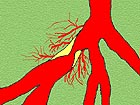
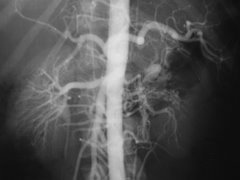
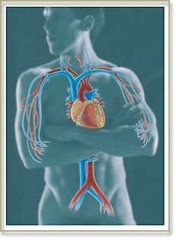
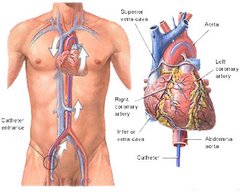
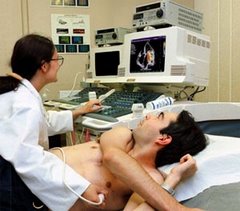
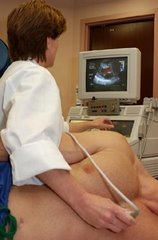
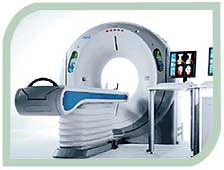
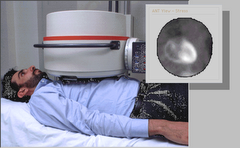
1 comment:
Thank you for visiting my blog and your comment about chocolates. I am glad that you are well today even though without the bypass. Wishing you health and success in all that you do.
Post a Comment